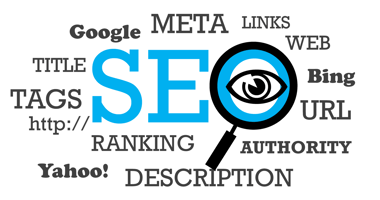Ever felt like you're in a digital game of cat and mouse, chasing after the successes of your...
Writing Content for Click-Through Success
Crafting compelling content that draws readers in and encourages them to click through to your site is an art that takes skill and strategy. As attention spans drop and competition for eyes grows, standing out from the noisy digital crowd is more difficult than ever. However, with some fundamental guidelines and best practices behind you, you can publish content optimised for maximum click-appeal. In this post, we’ll explore key elements to prioritise when writing click-worthy blog posts, landing pages, and beyond.
Understanding Your Audience
The first step to click-through success is understanding exactly who you’re trying to reach. Defining your target audience goes beyond basic demographics and should include an empathy map exploring:
- What motivates and matters to them
- Their goals and pain points
- Where they consume content
- What tone and language resonates
While the specifics will vary by industry, generally, B2B content caters to buyers researching solutions for business needs. B2C copy speaks to consumers’ interests, addressing their questions and connecting emotionally. Get clear on who you’re speaking to and what they care about. This will inform content themes and messaging. Without that audience-centric foundation, even the most beautifully crafted content will fall flat.
Optimising for Search Intent
After the audience, optimised click-through content factors search intent into the equation. Are you creating:
- Informational content to attract newcomers with educational overviews?
- Navigational posts to guide existing audiences?
- Transactional pages focused solely on conversions?
Ideally, you’ll have a healthy mix of all three. However, understanding the intent behind each piece allows proper SEO optimisation and formatting. For example, informational and navigational content should focus on organic search rankings with keywords seamlessly woven throughout. Transactional copy is better suited for PPC ads driving targeted traffic to landing pages with clear calls-to-action. Beginners can brush up on core SEO strategies with this SEO beginners guide.
When writing for search success, put yourself in the mindset of users entering a related query. What language are they likely using? How can you match that in an authentic way?
Crafting content around those high-value keywords and user intents is the fastest path to click-throughs.
Craft Compelling Headlines
Now that you know your audience and align your content with search intent, where do you start putting pen to paper (or fingers to keyboard)? With a magnetic headline, of course. Remember, readers scan before committing their time. You have mere seconds to grab their attention and persuade them to continue reading. Strong headlines sell what’s to come, offering an intriguing preview of the value within your content.
Some proven formulas for clickable headlines include:
- Curiosity gaps: Partial sentences that tease what’s to come (“What Happened When We Did X Will Blow Your Mind”)
- Question headlines: Posing an intriguing question readers need answered
- How-to headlines: Offering to solve a specific problem (“How to Achieve X in Y Easy Steps”)
- Numbered lists: Instantly conveying the structure ahead (“5 Tips To Improve X”)
- Direct benefit statements: Stating what the reader will gain (“Learn How To Increase Sales in One Week”)
Apply these templates while aligning with search intent and themes valuable to your audience. The goal is to hook scrollers and searchers alike into reading more.
Structure Content for Skimmability
You’ve reeled readers in with a killer headline. But carefully structured content keeps them engaged once they arrive. The rise of bite-sized video essays and listicles proves modern readers appreciate easy-to-digest formats. Lean into this skimmability by organising your content into short paragraphs, chunked sections, and ample white space.
Subheadings are your friend here. They allow readers to quickly scan for what interests them most. Bolded keywords help reinforce themes, and transitions guide readers from one thought to the next. Lists and bullet points can also clarify ideas into memorable snippets. Just be sure each point expands enough to justify the format. Avoid shallow statements that leave readers wanting more substance.
A strong outline ensures your structure aligns with reader expectations. Check that sections build logically from each other with smooth topic transitions between. This “sticky” scaffolding makes excellent click-through content.
Sprinkle Social Proof & Urgency
As readers move through your content, social proof builds authority and trust. Are industry experts referenced as sources? Are reader testimonials and positive reviews included? Does the data back up the claims?
Cite such social proof liberally, linking to reputable publications and sites. Quotes from recognised figures lend further validation. Help establish your credibility as a reliable narrator worth heeding.
For particularly time-sensitive offers or limited-time events, inject scarcity and urgency too. Countdown clocks, terms like “for a limited time only,” and low inventory warnings urge immediate action, translating to more click-throughs.
Just take care not to overly hype claims or make false promises. Nothing erodes reader trust faster than deceptive marketing tactics. Make sure any urgency reflects real constraints worth highlighting.
Optimise Formatting for Scanning
We’ve touched on content structure and flow, but formatting and visual presentation also impact clickability immensely.
Keep these principles in mind:
- Use an easy-to-scan sans serif font like Arial or Helvetica at size 12 or higher.
- Chunk content into short paragraphs of 1-4 sentences.
- Insert line breaks between paragraphs rather than indenting text.
- Format key points into numbered or bulleted lists.
- Bold key terms and phrases for scannability.
- Use ample white space between sections.
- Feature a progress bar if the content exceeds 600+ words.
This scan-friendly formatting allows readers to power through your content, extracting value even with limited time. It also directs eyes to key points worth highlighting. Don’t underestimate the engagement power a strategically bold font has. Seeing keywords jump out grabs attention, acting like mini “pattern interrupts” amid dense text.
Optimise Graphics and Media for Clicks
So far, we’ve focused on elements specific to text content. But in the multimedia web world, images, graphics, video, and other visual formats are equally critical for click appeal. Just as written content should draw readers in, compelling visuals pique curiosity and tease inner value worth clicking for. Consider these best practices for clickable graphics:
- Lead with high-quality hero images showing people interacting. Go beyond basic stock art.
- Caption images thoroughly but not overly wordy. Expand on concepts from the main text.
- Break up textual content with relevant graphics, icons, flowcharts and more.
- Feature directional arrows, circles or underscoring to showcase key details.
- Use contrasting colours that make images pop while remaining professional.
- Leverage multimedia content like gifs, engaging video explainers, animated flowcharts and more.
Graphics should enhance and build on written themes for maximum impact. An ironic, surprising or contrarian image also disrupts expectations, encouraging closer examination when paired with text. Just take care that whatever visuals you include reach the same standards of quality and value as your words. Don’t let haphazard graphics undermine an otherwise polished post.
Keep Readers Hooked with ‘Pattern Interrupts’
Even when content offers genuine value, readers can hit fatigue. Lengthy blocks of text start to blur together. Eyelids grow heavy. Distraction beckons.
That’s why savvy content creators employ “pattern interrupts” to regain wandering attention. These make content more interactive, adding visuals, multimedia, or creative angles that deviate from standard blog prose.
Some interrupt concepts include:
- Personality quiz/calculator widgets
- YouTube video explainers
- Scrollytelling visual narratives
- Interactive content like choose-your-own stories
- Bolded “instant takeaway” pull quotes
- “Behind the scenes” glimpses with images/video
Look for logical opportunities to incorporate interrupts aligned to your content’s themes and topics. The novelty shakes readers awake, re-engaging them to click through more pages.
Craft Compelling Calls to Action
An often overlooked yet critical click driver is clear calls to action (CTAs). Without direction on the next steps, even the most compelling content hits a dead end.
Strategically placed CTAs urge clicks by:
- Clearly stating the desired action (“Download our free guide”).
- Establishing the value of clicking through (“Access checklist for 10x results”).
- Using active command verbs (“Subscribe to our email list”).
- Directing exactly where to go next (“Click the button below”).
- Employing colour contrast to stand out.
- Maintaining consistent CTA branding across site pages.
To determine ideal CTAs, consider your audience’s intent moving through pages built around a central topic or theme. What logically follows each stage? For example, a nurturing sequence may progress visitors from blog post to checklist to product page before reaching final conversion CTAs. Track this journey when placing relevant calls to action.
Test placement on sidebars, exit-intent popups, inline links, and after paragraphs. Bold colours, arrows and contrast help them stand out amid copy.
Wrap Up by Circling Back
As your content reaches the final stretch, tie concepts together to leave readers with clear takeaways. Revisit your opening hook, building to a conclusive statement that gives readers:
- A reminder of key themes
- Final proof points
- A call to action
Email subscription forms, links to related content, product promotion, and social sharing prompts provide clear next steps for clicking visitors to continue their journey. End by circling back to reinforce your content’s core value-adds. Send readers off more knowledgeable, motivated, and compelled to apply what they’ve learned.
The Path to Click-Through Success
In our distraction-filled digital landscape, crafting clickable content is an ever-evolving art. But armed with audience insight, search strategy, compelling writing, and screen-friendly formatting, you can publish page-turner blog posts, landing pages, and beyond.
Use these guidelines to grab eyeballs and hold the reader's attention from start to finish. And don’t shy away from testing interrupt concepts or calls to action. With some experimentation, you’ll discover what makes your audience eagerly click through.




